Ponte knit, or ponte di roma, or ponte de roma, or ponte roma, or ponte as I’m choosing to call it (I’ve seen it called all of those things.) What the heck is it? Enjoy this little excerpt from my textile reference book.
Facts about Double Knits
Baugh, Gail. The Fashion Designer’s Textile Directory (Page 113). Barron’s Educational Series. Kindle Edition.
Distinctive features
- Firm hand yet soft knit touch.
- Varied surface texture, from smooth, even surface to significant texturing.
- Wrinkle resistant—sometimes “springy.”
Strengths
- Tightly knitted fabric that seems like a heavyweight woven fabric.
- Very resilient.
- Easy to cut and sew.
- Variety of surface textures available.
- Can be reversible, depending on the fabric design.
Weaknesses
- Can be snagged easily, like any knit surface.
- Mostly manufactured fibers used, especially textured polyester fiber.
- Availability is limited.
Usual fiber content
- 100 percent wool or wool/ polyester blends.
- 100 percent polyester.
- Acrylic or acrylic/polyester blends.
I realize ponte is classified as a bottom-weight fabric, meaning it’s best used for skirts or pants or jackets, but one of the joys of sewing is deciding to try something contrary just to see how it works out. So that’s what I did. I made another Frankie Tee, this time using ponte knit. (The book did suggest it as a possibility.)
My Thoughts on Using Ponte for the Frankie Tee
- As far as sewing it, the ponte was more stable. While it’s still a stretchy fabric, it’s a heavier weight, so it was more forgiving and less floppy than single knit jersey. Do note that even in spite of that, you might still encounter a hangry throat plate. One of my sleeve hems was slightly devoured in a spot.
- As far as wearing it, it definitely hangs differently than single knit jersey. It’s a bit stiffer. The collar does not stretch nearly as much as single knit jersey. Being a heavier fabric, it’s obviously warmer. Also, the ponte I used for the sleeves has a brushed back, making it quite soft and cozy. Overall, it doesn’t stretch or move as freely as single knit jersey. It’s not uncomfortable, but you definitely feel the difference of the heavier weight fabric.
- As far as my opinion on the fabrics I used here: I love the tribal print fabric. Wonderful to work with and looks amazing. The hemline was so much easier than my first tee; I didn’t have to use stabilizer, and instead of the twin needle/straight stitch, I used a triple zigzag stitch to catch the edges this time. Although I prefer the look of the 2 parallel lines of straight stitches on the face, I wanted to see how the zigzag would work for catching the raw edge. Maybe next time around, I try to marry those two techniques and use a twin needle as close as I can along the raw edge. The black for the sleeves isn’t my favorite. I wasn’t expecting the brushed back, and even though it’s called a ponte knit, it behaved all kinds of odd. The edges rolled something fierce, and also frayed and sent bits of fiber all over the place. The inside of my neckline looks mildly atrocious, but I think with time it’ll clean itself up since I topstitched right along the edge of it. Any remaining fraying bits should stop when they reach the stitches. Also, it’s quite pilly — after washing, it picked up quite a few bits of flotsam on the face that I had to pick off.
- Overall, if you want to make a Frankie Tee more suited for colder weather, ponte knit could be the way to go.

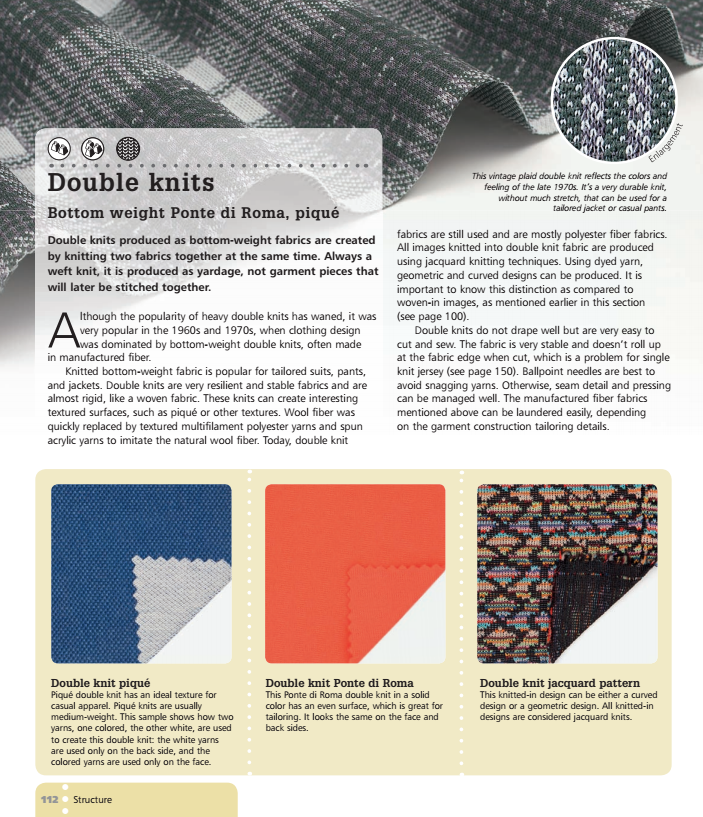
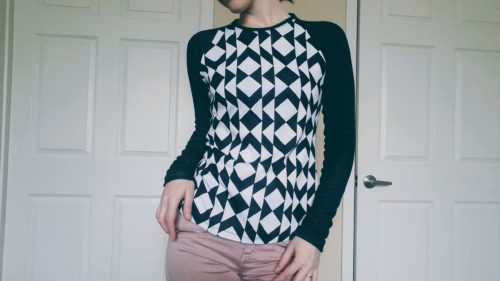
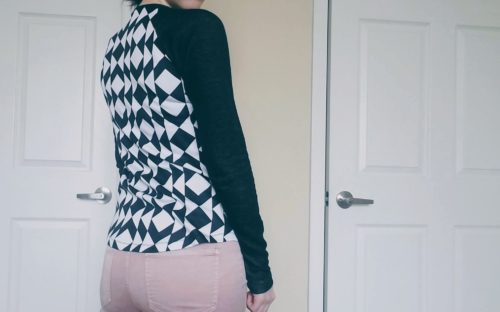
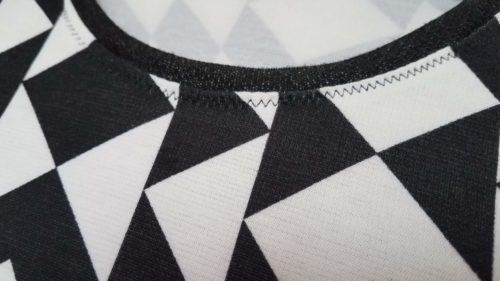
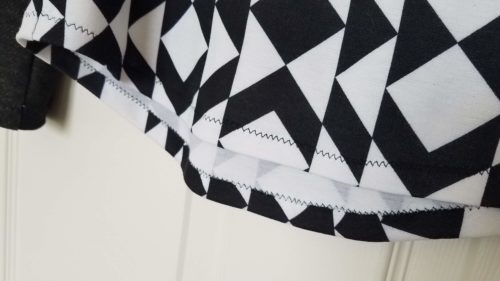
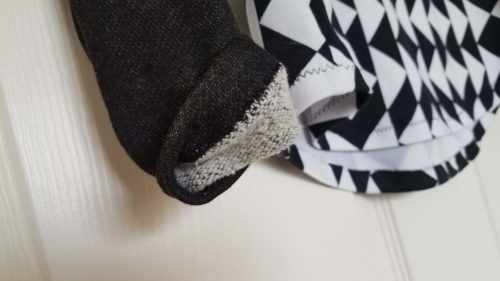
Leave a Reply